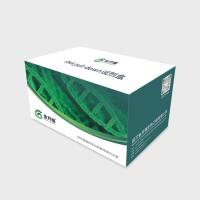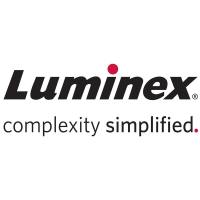Methods to Detect Protein Glutathionylation
互联网
- Abstract
- Table of Contents
- Materials
- Figures
- Literature Cited
Abstract
Glutathionylation is a posttranslational modification that results in the formation of a mixed disulfide between glutathione and the thiol group of a protein cysteine residue. Glutathionylation of proteins occurs via both nonenzymatic mechanisms involving thiol/disulfide exchange and enzyme?mediated reactions. Protein glutathionylation is observed in response to oxidative or nitrosative stress and is redox?dependent, being readily reversible under reducing conditions. Such findings suggest that glutathionylation plays an important role in mediating redox?sensitive signaling. Indeed, glutathionylation can affect protein function by altering activity, protein?protein interactions, and ligand binding. Glutathionylation may also serve to prevent cysteine residues from undergoing irreversible oxidative modification. Thus, determining the ability of a given protein to become glutathionylated can provide insight into its redox regulation and putative role in dictating cellular response to oxidative and nitrosative stress. Methods to measure protein glutathionylation using immunoblotting and mass spectrometry are described. Curr. Protoc. Toxicol . 57:6.17.1?6.17.18. © 2013 by John Wiley & Sons, Inc.
Keywords: glutathionylation; glutathione; posttranslational modification; immunoblotting; mass spectrometry
Table of Contents
- Introduction
- Basic Protocol 1: Glutathionylation of Recombinant Protein and Detection by Immunoblotting
- Basic Protocol 2: Detection of Protein Glutathionylation by Mass Spectrometry
- Basic Protocol 3: Determination of Global Cellular Protein Glutathionylation by Immunoblotting
- Alternate Protocol 1: Detecting the Glutathionylation of a Specific Cellular Protein by GSH Immunoprecipitation
- Reagents and Solutions
- Commentary
- Literature Cited
- Figures
Materials
Basic Protocol 1: Glutathionylation of Recombinant Protein and Detection by Immunoblotting
Materials
Basic Protocol 2: Detection of Protein Glutathionylation by Mass Spectrometry
Materials
Basic Protocol 3: Determination of Global Cellular Protein Glutathionylation by Immunoblotting
Materials
Alternate Protocol 1: Detecting the Glutathionylation of a Specific Cellular Protein by GSH Immunoprecipitation
Materials
|
Figures
-

Figure 6.17.1 Detection of global protein glutathionylation in GSSG‐treated BEAS‐2B cells by immunoblotting. BEAS‐2B cells in serum‐free DMEM/F12 medium were treated with 10 mM GSSG for 1 hr. Whole‐cell extracts were prepared using NP‐40 cell lysis buffer containing 20 mM NEM. For DTT‐treated samples, extracts were treated with 10 mM DTT for 10 min at room temperature. Cell extracts (20 µg) were resolved by nonreducing SDS‐PAGE, and global protein glutathionylation and GAPDH expression were analyzed by immunoblotting. The presence of anti‐GSH immunoreactive bands indicates cellular proteins that are potentially glutathionylated. Glutathionylation is readily reversible under reducing conditions, and the loss of the anti‐GSH immunoreactive bands in the DTT‐treated samples confirms which bands represent glutathionylated proteins. In this case, all the anti‐GSH immunoreactive bands except one at ∼160 kDa represent glutathionylated protein, as this band is present in the DTT‐treated sample. Equivalent protein loading amounts are demonstrated by the similar relative densities of the anti‐GAPDH immunoreactive bands. These results demonstrate that BEAS‐2B cells have a low level of basal protein glutathionylation that is dramatically increased by treatment with GSSG. View Image
Videos
Literature Cited
| Backos, D.S., Fritz, K.S., Roede, J.R., Petersen, D.R., and Franklin, C.C. 2011. Posttranslational modification and regulation of glutamate‐cysteine ligase by the alpha,beta‐unsaturated aldehyde 4‐hydroxy‐2‐nonenal. Free Radic. Biol. Med. 50:14‐26. | |
| Brennan, J.P., Miller, J.I., Fuller, W., Wait, R., Begum, S., Dunn, M.J., and Eaton, P. 2006. The utility of N,N‐biotinyl glutathione disulfide in the study of protein S‐glutathiolation. Mol. Cell. Proteomics 5:215‐225. | |
| Dave, K.A., Headlam, M.J., Wallis, T.P., and Gorman, J.J. 2011. Preparation and analysis of proteins and peptides using MALDI TOF/TOF mass spectrometry. Curr. Protoc. Protein Sci. 63:16.13.1‐16.13.21. | |
| Findlay, V.J., Townsend, D.M., Morris, T.E., Fraser, J.P., He, L., and Tew, K.D. 2006. A novel role for human sulfiredoxin in the reversal of glutathionylation. Cancer Res. 66:6800‐6806. | |
| Fritz, K.S., Kellersberger, K.A., Gomez, J.D., and Petersen, D.R. 2012. 4‐HNE adduct stability characterized by collision‐induced dissociation and electron transfer dissociation mass spectrometry. Chem. Res. Toxicol. 25:965‐970. | |
| Hill, B.G. and Bhatnagar, A. 2012. Protein S‐glutathiolation: Redox‐sensitive regulation of protein function. J. Mol. Cell. Cardiol. 52:559‐567. | |
| Liao, S., Ewing, N.P., Boucher, B., Materne, O., and Brummel, C.L. 2012. High‐throughput screening for glutathione conjugates using stable‐isotope labeling and negative electrospray ionization precursor‐ion mass spectrometry. Rapid Commun. Mass Spectrom. 26:659‐669. | |
| Menon, D. and Board, P.G. 2013. A fluorometric method to quantify protein glutathionylation using glutathione derivatization with 2,3‐naphthalenedicarboxaldehyde. Anal. Biochem. 433:132‐136. | |
| Niture, S.K., Velu, C.S., Bailey, N.I., and Srivenugopal, K.S. 2005. S‐thiolation mimicry: Quantitative and kinetic analysis of redox status of protein cysteines by glutathione‐affinity chromatography. Arch. Biochem. Biophys. 444:174‐184. | |
| Priora, R., Coppo, L., Salzano, S., Di Simplicio, P., and Ghezzi, P. 2010. Measurement of mixed disulfides including glutathionylated proteins. Meth. Enzymol. 473:149‐159. | |
| Shelton, M.D., Chock, P.B., and Mieyal, J.J. 2005. Glutaredoxin: Role in reversible protein S‐glutathionylation and regulation of redox signal transduction and protein translocation. Antioxid. Redox. Signal. 7:348‐366. | |
| Townsend, D.M., Manevich, Y., He, L., Hutchens, S., Pazoles, C.J., and Tew, K.D. 2009. Novel role for glutathione S‐transferase pi. Regulator of protein S‐glutathionylation following oxidative and nitrosative stress. J. Biol. Chem. 284:436‐445. | |
| Wu, S.L., Jiang, H., Hancock, W.S., and Karger, B.L. 2010. Identification of the unpaired cysteine status and complete mapping of the 17 disulfides of recombinant tissue plasminogen activator using LC‐MS with electron transfer dissociation/collision induced dissociation. Anal. Chem. 82:5296‐5303. | |
| Xiong, Y., Uys, J.D., Tew, K.D., and Townsend, D.M. 2011. S‐glutathionylation: From molecular mechanisms to health outcomes. Antioxid. Redox. Signal. 15:233‐270. | |
| Internet Resources | |
| http://www.abcam.com/ps/pdf/protocols/WB‐beginner.pdf | |
| Web site provides a guide to immunoblotting, with sections on sample preparation, electrophoresis parameters, transfer conditions, and blot visualization. It includes modifications to utilize when immunoblotting large proteins (>100 kDa). | |
| http://www.bio‐rad.com/LifeScience/pdf/Bulletin_2895.pdf | |
| Additional guide to immunoblotting, with emphasis on transfer and detection methods. This guide includes a troubleshooting section. | |
| http://www.matrixscience.com | |
| Web site for the Mascot database search engine used to analyze mass spectrometry data. The site includes tutorials for database searching. |







